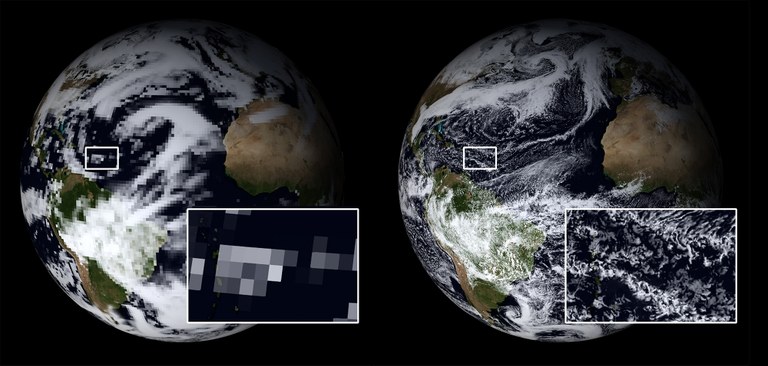As summarised in the Assessment Reports of the Intergovernmental Panel on Climate Change, climate scientists have a broad consensus that our climate is warming as we humans are changing Earth’s climate at an unprecedented rate. This has drastic impacts on the weather and climate in Europe.
Today's challenge is to inform society about the pace of warming, how it plays out regionally, and what it implies for the likelihood of surprises. Current weather and climate models provide us with valuable forecasts but still cannot fully resolve some specific details as storm systems in the atmosphere or eddies, their oceanic counterparts. Improved weather forecasts and climate projections are crucial for preparing Europe for the challenges of changing heat waves, dry spells, rains, and floods. They will inform decisions on emission reductions and adaptation strategies for housing, cities, farming, coastal defences, and other parts of society.
One of the main factors that are limiting the skill of the Earth System models is limited resolution, and resolution, in turn, is limited by the computational power that these models can leverage. The first two phases of ESiWACE have pushed the resolution of global Earth system models to unprecedented levels. This includes the first global atmosphere models that ran at ~1 km. The 3rd phase of ESiWACE, ESiWACE3, will continue collaborating with the weather and climate modelling centres to ensure that we aim to enable global weather and climate models to resolve small-scale simulation features explicitly, significantly improving our ability to predict weather patterns in a changing climate.
Global storm- and eddy-resolving weather and climate models
These models can explicitly resolve processes such as atmospheric convection and simulate, e.g., clouds and precipitation much more realistically. However, compared to state-of-the-art climate and weather models, the resolution of these new models needs to be increased by orders of magnitude. Only upcoming exascale supercomputers will be sufficiently robust to satisfy the computational demands of such models. Numerical weather prediction and climate modelling always have the dependable computing power and the ability to produce, store and analyse large amounts of simulated data. Much more computational power is needed for any increase in the achievable spatial resolution and the completeness and accuracy of physical processes that can be calculated and predicted by the models. ESiWACE3 will continue working with the community to ensure that weather and climate centres use the new exascale generation of EuroHPC machines properly and efficiently.
A step change in the quality of weather and climate forecasting, benefiting society
Due to the enormous economic importance of weather and climate predictions, these simulations have, for decades, been routinely run on some of the most powerful supercomputers worldwide. With the transition to exascale computing, operational use of global storm-resolving models, i.e. models based on an excellent underlying mesh that spans the globe with grid spaces of only a few km, will become possible, ultimately allowing explicitly resolved vertical energy transfers in the atmosphere. This will mark a step change in weather quality and climate forecasting. Furthermore, it will pave the way for directly comparing simulation data with observational data, e.g., weather satellites.

Figure: A day in early February 2020 in a traditional "CMIP6 high resolution" simulation (grid resolution ~80km) compared to a 2.5 km "DYAMOND" simulation performed in the context of ESiWACE. While the CMIP6 model can capture the broad concept of clouds in the Caribbean region, the DYAMOND model can represent the intricacies of the cloud structures and thus represent the behaviours of different cloud types. This much more detailed representation of the atmospheric circulation will lead to drastically improved climate predictions once these models can be run for more extended simulation periods. The weather in both simulations is different, as the CMIP simulation is a free-running model that has been running for centuries. The DYAMOND simulation has been running for a few days only with initial values from the ECMWF weather prediction system.
ESiWACE - Towards exascale weather and climate simulations
